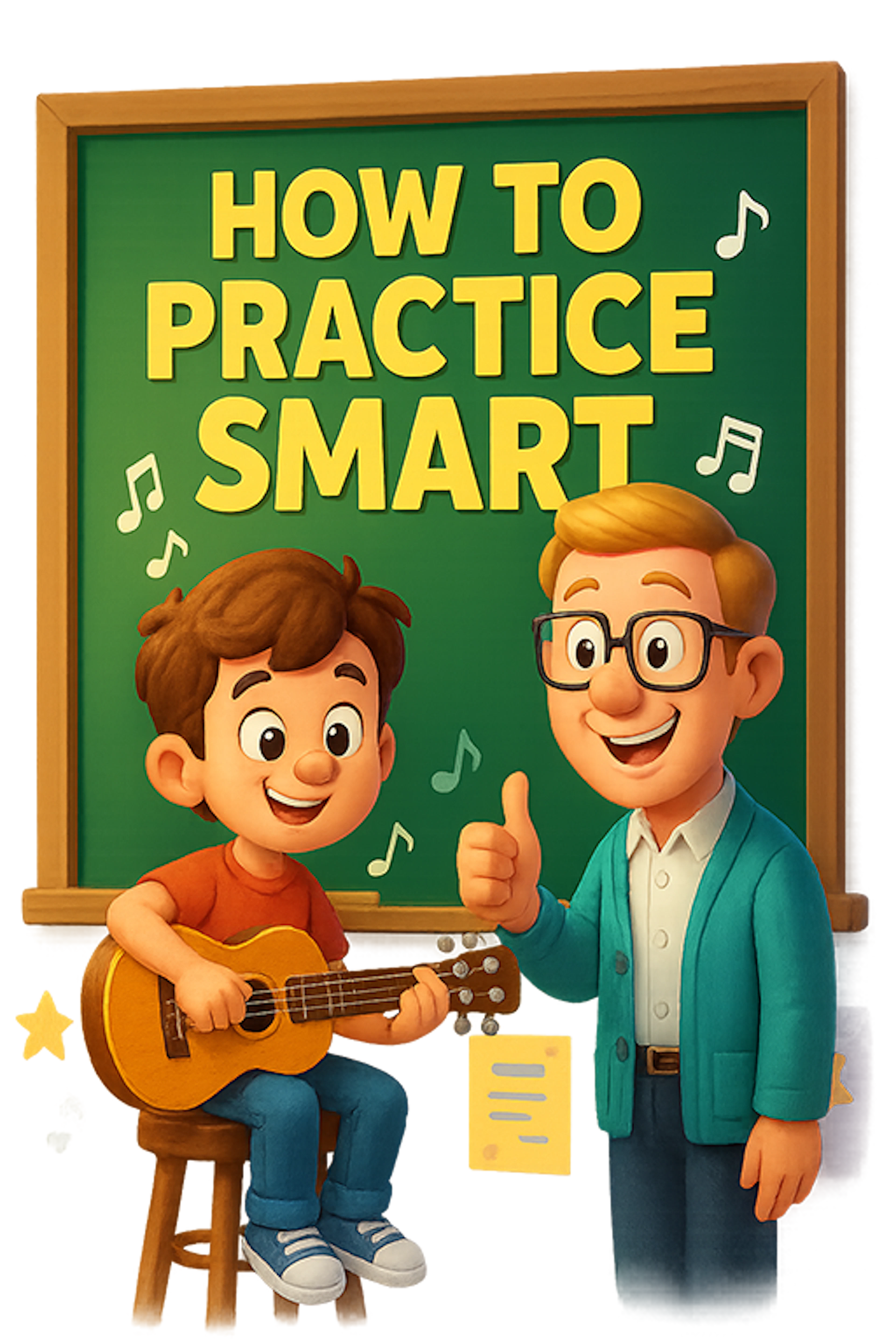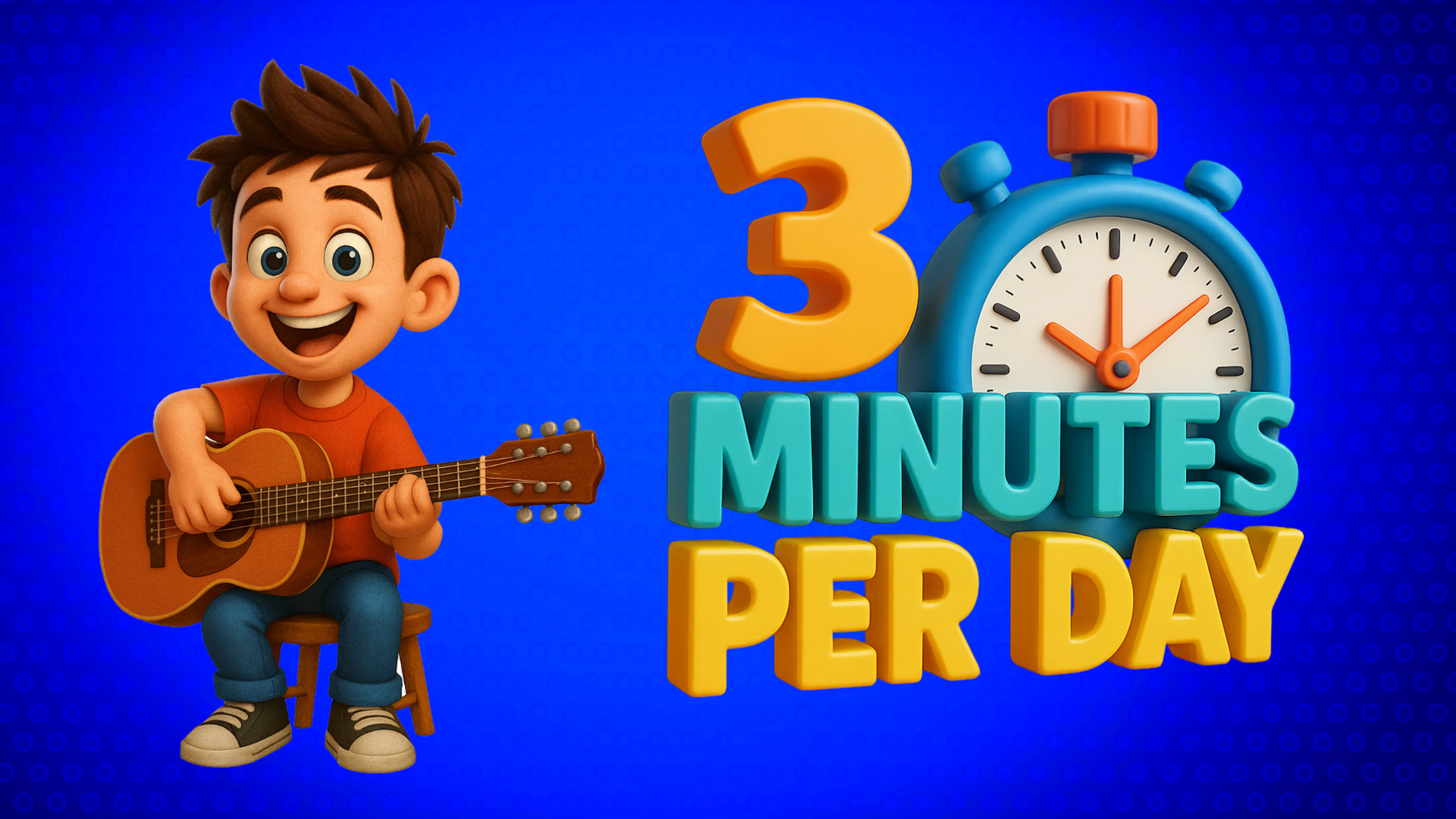Introduction to Reading Music for Young Guitarists: Tablature vs. Musical Staff
As a parent of a young guitarist aged 5-8, understanding the basics of music reading can be both fascinating and intimidating. Two primary methods of reading music are tablature and standard musical notation.

In this article, we'll explore these methods, highlighting their differences and how they can be used effectively in the learning journey of your child. We'll also discuss how Kids Guitar Dojo (KGD) addresses these concepts in a fun and engaging way.
Tablature: The Beginner's Best Friend
Tablature, often shortened to "tab," is a visual representation of the guitar fretboard. It consists of six horizontal lines, each representing one of the six strings on a standard guitar: high E, B, G, D, A, and low E from top to bottom2. This layout makes it easy for beginners to learn songs quickly by showing exactly which frets to press on which strings.
However, tablature has some limitations. It typically doesn't include detailed rhythmic information, which means your child might need to listen to the song to understand the timing and phrasing4. Despite this, tablature is incredibly popular and widely used, especially among guitarists.
Standard Musical Notation: The Traditional Approach
Standard musical notation, on the other hand, is a more comprehensive system that represents pitch, rhythm, and other musical elements. For guitarists, the treble clef is commonly used, which has five lines representing the notes E, G, B, D, and F from bottom to top3. The spaces between these lines spell out the word "FACE." To help remember the notes on the lines, you can use the acronym "Every Good Boy Deserves Fruit."
Musical notation provides a deeper understanding of music theory and is essential for collaboration with musicians playing other instruments. However, it can be more challenging to learn, especially for young children.
Kids Guitar Dojo: Bridging the Gap
At Kids Guitar Dojo, we recognize the importance of both tablature and musical notation. Our approach is designed to make learning fun and accessible for young beginners. In Book 1, we introduce tablature with a twist: we add rhythm to the tabs. This not only helps children learn songs with proper timing but also lays the groundwork for understanding musical notation. By incorporating rhythm into tablature, we're essentially solving half of the puzzle of reading music.
Once your child is comfortable with tablature and rhythm, transitioning to musical notation becomes much easier. In Book 2: Reading Music Simplified, we build on this foundation by introducing the notes on the staff. This natural progression allows children to connect the dots between tablature and musical notation, making the learning process smoother and more enjoyable.
Benefits of the KGD Approach
- Engaging and Interactive: Our materials are designed to be visually appealing and fun, making learning an enjoyable experience for young children.
- No Pressure Environment: Our program allows children to learn at their own pace, reducing stress and increasing motivation.
- Parent Involvement: We encourage parents to be part of the learning process, providing support and guidance through optional Zoom sessions.
- Structured Learning: Our books provide a structured approach to learning, ensuring that children build a solid foundation in music reading.
Conclusion
As a parent, introducing your child to music can be a rewarding experience. By understanding the basics of tablature and musical notation, you can support their musical journey more effectively. Kids Guitar Dojo offers a unique approach that combines the ease of tablature with the depth of musical notation, making it an excellent resource for young guitarists.
In this series of blog posts, we'll continue to explore the world of music reading for kids, providing tips, insights, and resources to help them grow into confident musicians. Whether your child is just starting out or looking to deepen their musical understanding, KGD is here to help them every step of the way.



